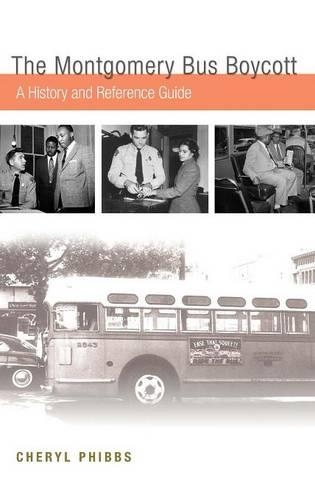
The Montgomery Bus Boycott: A History and Reference Guide
(Hardback)
Publishing Details
The Montgomery Bus Boycott: A History and Reference Guide
By (Author) Cheryl Phibbs
Bloomsbury Publishing PLC
Greenwood Press
23rd July 2009
United States
Classifications
General
Non Fiction
323.1196073071624
Physical Properties
Hardback
180
Width 156mm, Height 235mm
425g
Description
A revealing, comprehensive, and detailed account focusing on the people and personalities behind the Montgomery, Alabama, Bus Boycott in 19551956, which became the catalyst for a national civil rights movement. The Montgomery Bus Boycott: A History and Reference Guide offers a comprehensive account of a critical turning point in American history. It offers a richly detailed chronological trip through post-World War II Southern society to the early 1960s, then focuses on the day-to-day frustrations, challenges, and victories of the people behind the protest that inspired a nationwide movement. The Montgomery Bus Boycott fills a gap in available resources with its comprehensive portrait of mid-1950s Montgomerythe mainly black, uneducated female protestors, activist Rosa Parks, Dr. King, and the white society desperate to keep intact the only culture they understood. Firsthand news reports, editorials, quotes, eyewitness accounts, and behind-the-scenes stories of political maneuvering help readers experience this dramaticand still reverberatingvictory over oppression.
Reviews
. . . this reference guide will be most useful for senior high school and undergraduate students. . .This title is recommended for undergraduate history collections. * ARBAonline *
Drawing on firsthand news reports, editorials, and eyewitness accounts, this detailed account of the 1957 Bus Boycott in Alabama, which became the catalyst for the civil rights movement, chronicles Southern society from the post-World War II era to the early 1960s, then focuses on the people behind the protest. Original documents, interviews, letters to the editor, and transcripts of court testimony shed light on the roles of lessknown figures, including the mainly black, uneducated female protestors, and the ordinary members of white society desperate to maintain the status quo, in addition to more well-known personalities such as activist Rosa Parks and leader Dr. Martin Luther King. Numerous B&W historical photos of meetings, boycott leaders, mug shots, and courtroom scenes give a visual portrait of the era. Other features include a chronology of civil rights events from the 1863 Emancipation Proclamation to the outcome of the boycott, biographies of eight key figures, and a glossary of legal terms and federal amendments of the era. * Reference & Research Book News *
Author Bio
Cheryl Phibbs is an independent free lance writer living in Winston-Salem, NC.
